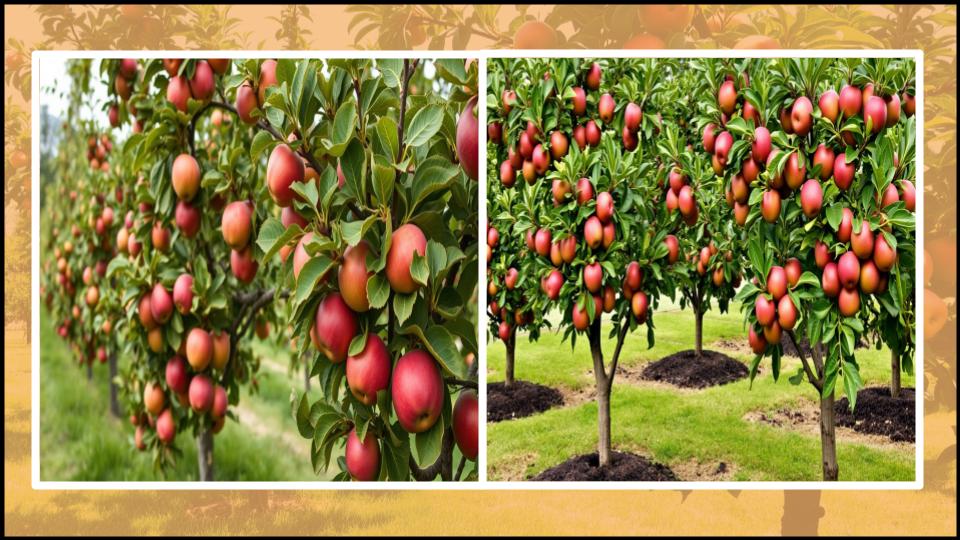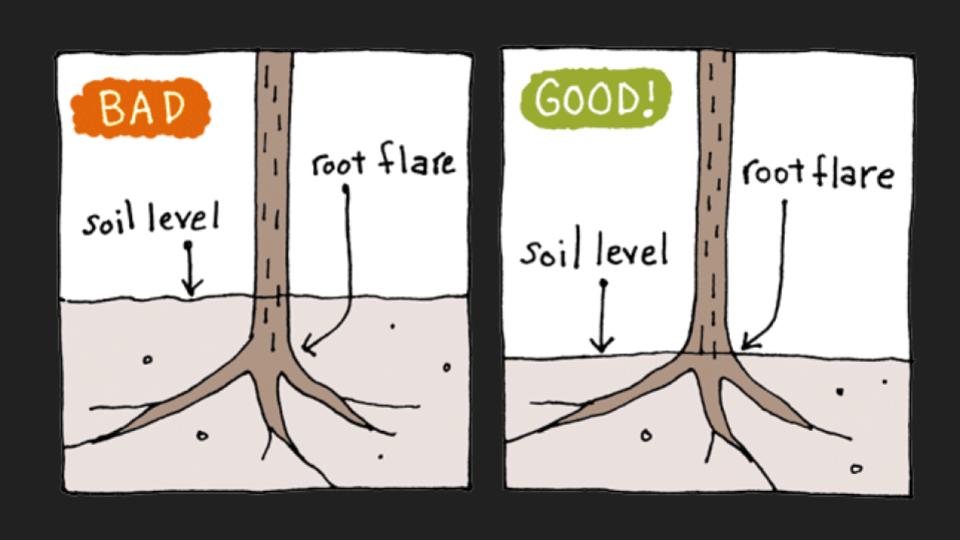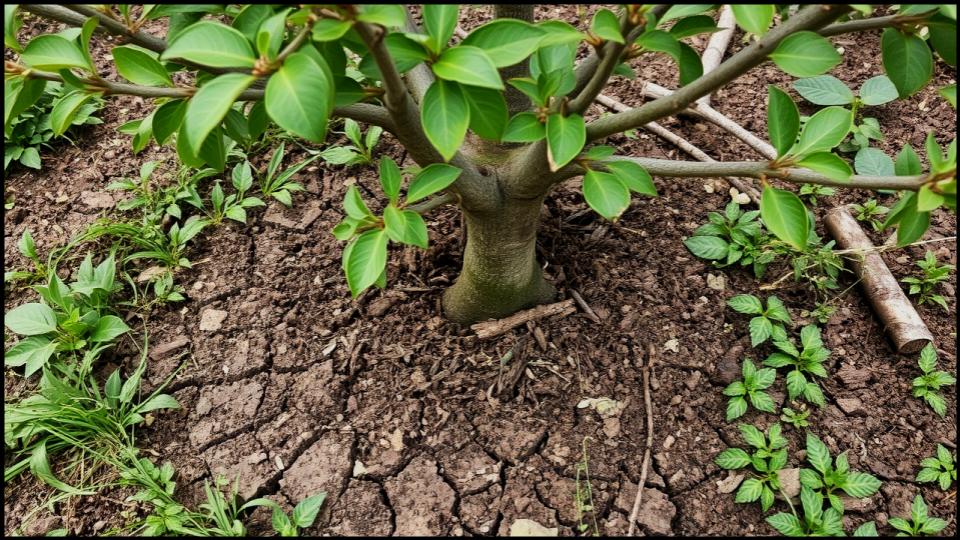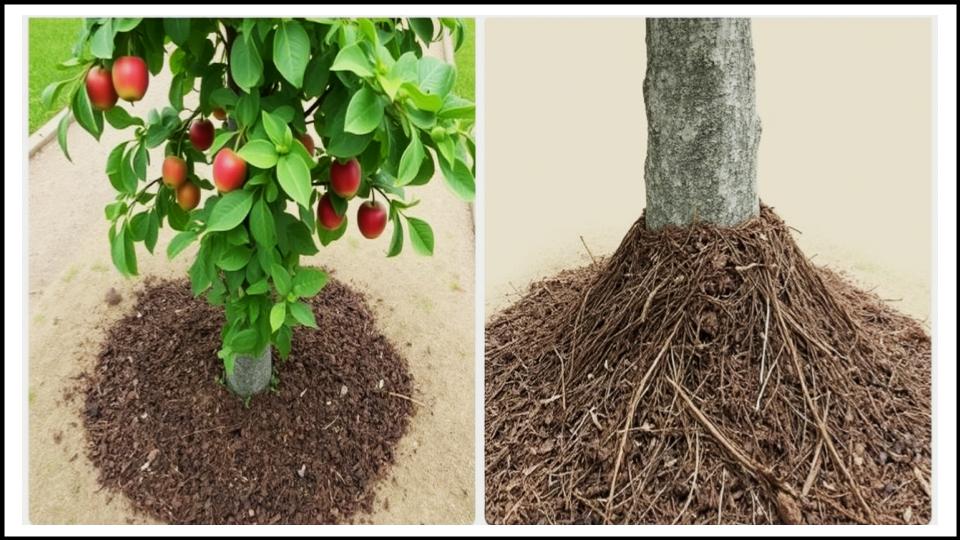
There are few gardening moments more rewarding than picking a sun-warmed peach from your very own tree, its fragrance promising the sweet, juicy bite to come. Growing fruit is a labor of love, a beautiful investment in your landscape and your larder. Yet, it can also be a source of profound frustration when, after years of waiting, your harvest is small, diseased, or nonexistent. More often than not, the culprit isn’t bad luck, but one of a few common and entirely correctable fruit tree mistakes.
As a horticulturist, I’ve seen these simple missteps turn dreams of abundance into disappointment. But here’s the wonderful truth: understanding the needs of your trees is the most significant step toward a successful harvest. This guide will walk you through the ten most critical errors I see home gardeners make, providing the expert insights and practical solutions you need to ensure your trees not only survive but truly thrive. Let’s cultivate that beautiful, bountiful orchard you’ve been dreaming of.
Key Takeaways for a Thriving Fruit Tree
Here’s what every home orchardist needs to know:
- Plant High: Never bury the graft union—the swollen knob near the base of the trunk. Planting too deep is a leading cause of failure.
- Prune with Purpose: Prune in late winter for structure and health, not just to reduce size. Understand that different fruits have different needs.
- Water Wisely: Young trees need consistent, deep watering to establish their roots. Check the soil moisture; don’t just water on a rigid schedule.
- Sunlight is Non-Negotiable: Most fruit trees need at least 6-8 hours of direct, unfiltered sunlight to produce quality fruit.
- Test Your Soil: Before you even plant, a simple soil test can tell you what your tree needs to flourish, saving you years of guesswork.
Mistake #1: Planting Too Deeply
Of all the issues I troubleshoot in home orchards, this is perhaps the most frequent and fatal. Gardeners, with the best of intentions, often dig a deep hole and set the tree in it like a fence post. This is one of the quickest ways to sentence a young tree to a short, unproductive life.
When a fruit tree is planted too deeply, the base of the trunk (the root flare) and, critically, the graft union are buried. This soil contact suffocates the bark, invites rot and disease, and can prevent the roots from accessing the oxygen they need to grow. According to the University of Maryland Extension, a tree planted with its graft union below the soil line may even send up suckers from the rootstock, which will not produce the desirable fruit you paid for.
How to Fix It: The solution is all in the planting technique. Dig a hole that is two to three times wider than the root ball, but no deeper. The goal is to have the root flare—the point where the trunk widens just above the roots—sitting at or slightly above the level of the surrounding soil. When you place the tree in the hole, the graft union (the noticeable bump or scar on the lower trunk) should be a good 2-4 inches above the final soil line.

Mistake #2: Choosing the Wrong Location
A fruit tree is a long-term commitment, and its location is paramount. A spot that seems fine on a cool spring day might be a windswept tunnel in August or a shady corner by mid-summer. Insufficient sunlight is a primary reason for poor fruit production. Most fruit trees—including apples, pears, peaches, and plums—require full sun, which means at least 6 to 8 hours of direct, unfiltered sunlight per day. Less sun results in fewer flowers and subpar, flavorless fruit.
Poor air circulation is another site-selection pitfall. Planting in a low-lying “frost pocket” where cold air settles can lead to late spring frosts zapping your precious blossoms.
How to Fix It: Before you even buy a tree, spend a full day observing your yard. Track the sun’s path across your property to find the spot with the longest duration of direct light. Avoid low spots and areas with poor drainage where water pools after rain. If you’ve already planted a young tree in a less-than-ideal spot, you can often transplant it during its dormancy in late winter or early spring.
Mistake #3: Improper Watering
“How often should I water?” is a question I hear constantly. The answer is frustratingly simple: “When the tree needs it.” Inconsistent or improper watering is a major stressor for fruit trees, especially young ones. Overwatering is just as dangerous as underwatering. Soggy, waterlogged soil deprives roots of oxygen and can lead to root rot, a fatal condition.
In my experience, gardeners often provide frequent, shallow sprinklings. This encourages a weak, shallow root system that is vulnerable to drought.
How to Fix It: For newly planted trees, deep, consistent watering is key to helping them establish. For the first few weeks, water every 2-3 days, applying it slowly right over the root ball. After the first month, reduce watering to a deep soak once a week during the growing season, unless you have significant rainfall. The University of Minnesota Extension suggests providing 1-1.5 gallons of water for each inch of trunk caliper at every watering. The best method is to use a soaker hose or let a regular hose trickle at the tree’s base for 30-60 minutes. Always check the soil first; if it’s moist 2-3 inches down, wait another day or two.
Mistake #4: Neglecting the Soil
Healthy soil is the foundation of a healthy tree. Simply digging a hole in compacted lawn or heavy clay and expecting a tree to thrive is a recipe for failure. Fruit trees need well-drained, loamy soil to allow their roots to expand and access water and nutrients. Equally important is the soil’s pH. Most fruit trees prefer a slightly acidic to neutral pH, typically between 6.0 and 7.0.
How to Fix It: Before planting, conduct a soil test. You can get a simple kit from a garden center or send a sample to your local university extension service for a detailed analysis. This will tell you your soil’s pH and any nutrient deficiencies. You can then amend the soil accordingly. Don’t just amend the soil in the planting hole; this can create a “pot” effect where roots are reluctant to grow into the surrounding native soil. Instead, amend a larger area. Incorporating several inches of well-rotted compost or manure into the top 6-8 inches of soil over a wide area before planting is one of the best things you can do for future fruit tree care.

Mistake #5: Pruning Incorrectly (or Not at All)
The fear of pruning fruit trees is real. Many gardeners are so afraid of doing it wrong that they do nothing at all, resulting in a dense, tangled mess of branches. Others give their fruit trees a uniform “haircut,” treating them like hedges. Both are significant fruit tree mistakes.
Proper pruning is essential for health, structure, and fruit production. It opens the canopy to sunlight and air circulation, which helps ripen fruit and reduce disease pressure. In my own garden, I find that a well-pruned tree is not only more productive but also more beautiful.
How to Fix It: The best time to prune most fruit trees is in late winter or early spring when the tree is dormant.
- First, remove the three D’s: any branches that are Dead, Damaged, or Diseased.
- Next, remove crossing branches: if two limbs are rubbing, remove the weaker one.
- Remove watersprouts (vigorous, vertical shoots) and suckers (shoots from the base).
- Thin the canopy to allow light to penetrate the center of the tree. Aim for a relatively open, vase-like shape or a central leader system, depending on the type of fruit.
Mistake #6: Ignoring Pollination Needs
A tree full of blossoms that never sets fruit is a classic sign of a pollination problem. Many fruit trees, including most varieties of apples, pears, and sweet cherries, are not self-fertile. This means they require pollen from a different, compatible variety of the same fruit to produce a crop. A lonely apple tree in a yard with no other apple trees nearby may never give you a single apple.
How to Fix It: When planting fruit trees, always check their pollination requirements. If your tree needs a partner, you must plant another compatible variety within 50 feet. If you only have space for one tree, choose a self-fertile variety (like a ‘Golden Delicious’ apple or most peaches) or a tree that has multiple varieties grafted onto one trunk.
Mistake #7: Fertilizing Improperly
More is not better when it comes to fertilizer. While trees need nutrients, over-fertilizing—especially with nitrogen—can do more harm than good. Excessive nitrogen promotes lush, green, leafy growth at the expense of flowers and fruit. It can also lead to weak, succulent growth that is more susceptible to pests and diseases like fire blight in apples and pears.
How to Fix It: Base your fertilizing decisions on a soil test and the tree’s performance. According to Cornell University’s Garden-Based Learning program, a young, non-bearing tree should put on about 12-18 inches of new growth each year. A mature, bearing tree should grow 6-12 inches. If your tree is growing less than this, it may need nitrogen. If it’s growing much more, hold off. Apply a balanced fertilizer (like 10-10-10) in the spring, spreading it evenly under the canopy’s dripline, not against the trunk.
Mistake #8: Creating a “Mulch Volcano”
Mulch is a gardener’s best friend. It conserves soil moisture, suppresses weeds, and moderates soil temperature. However, applying it incorrectly can cause serious harm. The “mulch volcano”—piling mulch high against the trunk of the tree—is a common and damaging practice. This traps moisture against the bark, creating a perfect environment for fungal diseases, insect infestations, and rot.
How to Fix It: Apply a 2-4 inch layer of organic mulch (like wood chips or shredded bark) in a wide circle around the tree, extending to the dripline if possible. Crucially, pull the mulch back several inches from the trunk itself, creating a donut shape, not a volcano. This keeps the base of the tree dry and healthy.

Mistake #9: Ignoring Pests and Diseases
It’s heartbreaking to watch a promising crop of young apples become riddled with scab or to see the tell-tale ooze of a borer on a peach tree trunk. Ignoring the early signs of pests and diseases allows problems to become established, making them much harder to control. Effective fruit tree care requires vigilance.
How to Fix It: Scout your trees regularly. Look for discolored leaves, spotted fruit, sawdust-like frass on the trunk, or unusual insects. Many common issues can be managed with cultural practices, such as diligent cleanup of fallen leaves and fruit, which harbor disease spores. For specific issues, consult resources like the Washington State University’s Tree Fruit site for diagnostic help. Consider dormant oil sprays in late winter to smother overwintering pest eggs and certain fungal spores.
TOOLS AND MATERIALS BOX:
- Bypass Pruners: For clean cuts on small branches.
- Loppers: For branches up to 1.5 inches thick.
- Pruning Saw: For larger limbs.
- Organic Mulch: Wood chips, shredded bark, or straw.
- Soil Test Kit: An invaluable diagnostic tool.
- Dormant Oil Spray: For preventative pest and disease control.
Mistake #10: Unrealistic Expectations
Finally, a common mistake is simply expecting too much, too soon. A newly planted whip will not produce fruit in its first year. In fact, it can take anywhere from 2 to 7 years for a fruit tree to become mature enough to bear a significant crop. Impatience can lead to over-fertilizing or other stressful practices in an attempt to rush the process.
How to Fix It: Practice patience. Understand that you are nurturing a plant for the long term. Focus the first few years on establishing a strong root system and a healthy, well-pruned structure. This is the work that lays the foundation for decades of bountiful harvests. Celebrate the small victories—the healthy new leaves, the strong growth, the first few blossoms. The fruit will come.
A Harvest of Your Own
Growing fruit trees is a deeply gratifying journey that connects you to the rhythm of the seasons. By avoiding these common fruit tree mistakes, you move from being a hopeful gardener to a skilled and confident orchardist. You learn to see what your tree needs—more light, better drainage, a structural trim—and how to provide it. The reward for this thoughtful fruit tree care isn’t just a basket of delicious fruit; it’s the profound satisfaction of cultivation and the joy of sharing a harvest you nurtured from the very beginning. Now, you are ready to grow with confidence.
Read More
6 Gorgeous Flowering Trees That Could Ruin Your Yard, Experts Warn
